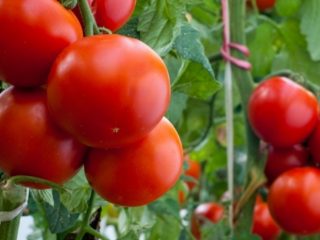Content
Many gardeners prefer to grow tomato seedlings themselves. After all, this allows you not to limit yourself both in the choice of varieties and in the number of plants grown, to adjust the planting time to your individual conditions, and the savings are quite significant. Of course, it’s a shame when tender sprouts suddenly begin to wither, turn yellow, or even die.
Why is this happening?
When looking for an answer to the question: “Why do tomato seedlings die?” we must proceed from the fact that there are at least three main factors influencing the life and health of plants in general and tomatoes in particular.
Lighting and heat
Tomatoes need a lot of light and preferably direct sun. Especially in the early spring months, when this is still a problem in the middle zone. If there is a lack of light, tomato seedlings' immunity is weakened, and they are more likely to suffer from some kind of infection or error in care.
We must remember that tomatoes are by no means sissy, although they love warmth.
In addition, seeds need about 20-24°C for germination, and for sprouting sprouts, it is necessary to reduce the temperature to 17-19°C so that they do not stretch out too much.This is especially important when there is a lack of light. But tomatoes don’t like cold either. At temperatures below +15, their growth stops, and if it is below +10, then damage to the seedlings is possible. Usually they are expressed in the fact that the leaves curl a little and acquire a purple tint. Tomato seedlings Fresh air is also vital; ventilate the seedlings whenever possible, and in warm weather, harden them outside (on the balcony).
Soil and air humidity
This is one of the most important factors, non-compliance with which can lead to the death of tomato seedlings.
Moreover, if seedlings, especially mature ones, can still tolerate dry soil, then waterlogging of the soil, and even combined with cold, will most likely end disastrously for the plants. We must remember that it is always better to underwater tomatoes a little than to overfill them. The soil surface must always dry out between waterings. It is the failure to comply with this condition that most often leads to the disease of tomato seedlings with the fungal disease “black leg”. It is very difficult to save plants - you can only try to replant them in fresh soil and keep them in a semi-dry state.
Soil problems
Practice shows that most often the death of tomato seedlings occurs due to problems with the soil mixture.
It may, firstly, be infected with bacteria, fungi or viruses, secondly, be of an unsuitable mechanical composition (too dense and heavy), and thirdly, have an acidity that is inappropriate for tomatoes.It doesn’t matter what kind of soil you use for seedlings: purchased or from your own plot, before planting it must be calcined in the oven or on the stove, spilled with potassium permanganate, or even better, treated with phytosporin or furatsilin. To loosen it, it is better to add vermiculite instead of sand. And acidity can be checked using a special test, which is now sold in any garden store. Tomatoes love neutral soils. If the soil is acidic, you can add wood ash.
What can be done to save seedlings
What can be done in your particular case if the tomato seedlings are already sick?
- If the leaves of tomato seedlings begin to gradually turn pale, turn yellow, turn white in places, sometimes dry out and fall off, starting with the cotyledon leaves, then, first of all, try watering less. For regions in the middle zone and further north, with a lack of sunny days, these are fairly common symptoms of overwatering;
- If the leaves simply turn yellow, and the problem is definitely not in watering, then you can try feeding the tomato seedlings with microelements and iron chelate. By the way, the same symptoms also appear with excess fertilizer. Therefore, if you regularly fed your tomato seedlings, you may have overdone it, and now you need to carefully transplant your seedlings into another soil;
- If the leaves turn yellow and at the same time the tomato seedlings become lethargic, then an infection can be suspected. In this case, it is necessary to treat the tomatoes with Fitosporin or Trichodermin.
A radical solution to the problem if nothing else helps
You seem to have done everything correctly, but the leaves still wither or turn yellow and the seedlings die.There remains one last way to try to save tomato seedlings - cut off the top of the plants, even if there is only one living leaf left, and place the cuttings in water at room temperature or warmer. Only stems should be in the water, no leaves.. When even the smallest roots appear on the cuttings, they can be planted in a light, disinfected substrate, preferably with the addition of vermiculite. Water moderately. The remaining tomato “stumps” should also continue to be moistened moderately; it is likely that they will produce stepsons and soon turn green, no worse than their comrades. Usually only their development occurs more slowly than the growth of the “tops”.
If you follow all the above recommendations, you will definitely be able to grow healthy tomato seedlings, which in the future will delight you with their delicious fruits. There is only one more point - these are tomato seeds. With your own seeds you are doomed to success, but any purchased ones are always a pig in a poke. So grow and harvest tomato seeds yourself if possible.














Tomato seedlings are more resistant to diseases if the seeds are soaked in Humate +7 solution for 1 day before sowing